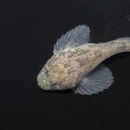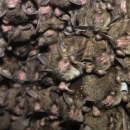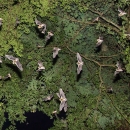Featured Species
Our office works to conserve declining species and recover federally threatened and endangered species and their habitats. For example, our staff have engaged in multi-state partnerships to better understand the biology and habitat needs of the endangered Indiana bat. This work proved essential for our staff as they completed the species’ five-year review in 2019, ensuring an appropriate level of protection under the Endangered Species Act. Although we focus on imperiled bat and freshwater mussel species like the Indiana bat and the pink mucket, our office has also been actively involved with the conservation and recovery efforts of several threatened and endangered species. Topeka shiner, Niangua darter, grotto sculpin and Ozark hellbender are just a few of the other important species we focus on.
Conservation and restoration of habitat for threatened and endangered species is also a large part of our work in Missouri. Working through the Endangered Species Act, we are able to secure and direct funding for the protection and restoration of important areas. A great example of this work in action can be seen by the office’s procurement of funds from a pipeline construction project across the state, which was subsequently used to finance the acquisition and protection of the world’s largest hibernaculum (winter bat roost) for Indiana bats in Hannibal, Missouri. The hibernaculum location is now permanently protected as a 200 acre city park and enjoyed as a recreational resource.
In addition, the office also utilizes the U.S. Department of the Interior's Natural Resource Damage Assessment and Restoration (NRDAR) program to analyze and restore natural resources injured by the release of hazardous substances into the environment. Working across numerous polluted locations known as Superfund sites, we perform rigorous, multi-year scientific studies and use those studies’ findings to pursue and negotiate legal settlements and judgements from responsible parties. When we achieve a financial settlement, we then put those funds to work restoring injured sites and species and compensating the public for their loss of natural resources.




